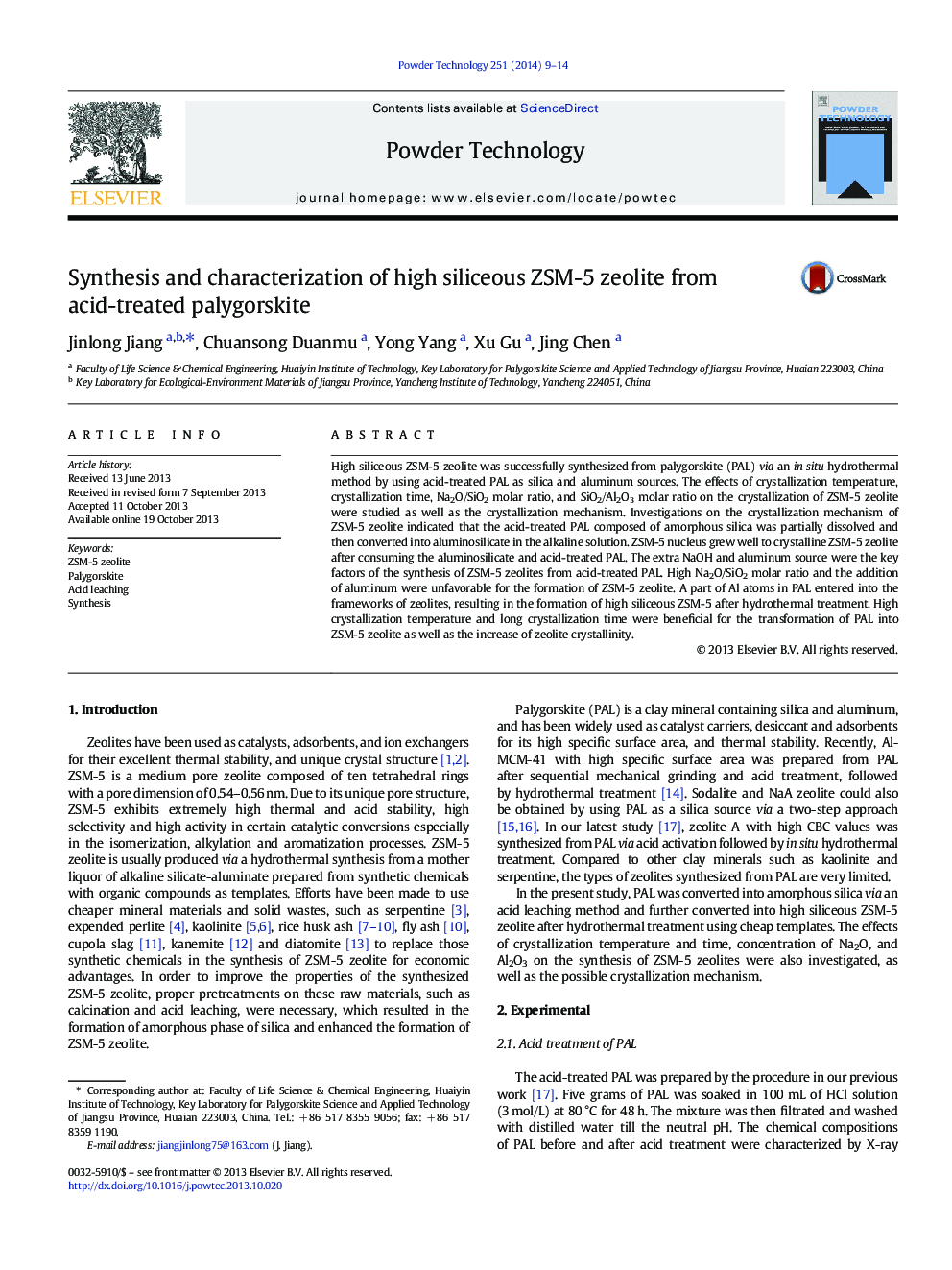| Article ID | Journal | Published Year | Pages | File Type |
|---|---|---|---|---|
| 236551 | Powder Technology | 2014 | 6 Pages |
•ZSM-5 zeolite has been successfully synthesized from acid-treated palygorskite.•A part of Al atoms in the acid-treated PAL entered into ZSM-5 crystal.•Low additional amount of NaOH was favorable to the growth of ZSM-5 crystals.•The external aluminum source would prevent the formation of ZSM-5 zeolite.•ZSM-5 zeolites with high crystallinity were obtained at high temperature and long time.
High siliceous ZSM-5 zeolite was successfully synthesized from palygorskite (PAL) via an in situ hydrothermal method by using acid-treated PAL as silica and aluminum sources. The effects of crystallization temperature, crystallization time, Na2O/SiO2 molar ratio, and SiO2/Al2O3 molar ratio on the crystallization of ZSM-5 zeolite were studied as well as the crystallization mechanism. Investigations on the crystallization mechanism of ZSM-5 zeolite indicated that the acid-treated PAL composed of amorphous silica was partially dissolved and then converted into aluminosilicate in the alkaline solution. ZSM-5 nucleus grew well to crystalline ZSM-5 zeolite after consuming the aluminosilicate and acid-treated PAL. The extra NaOH and aluminum source were the key factors of the synthesis of ZSM-5 zeolites from acid-treated PAL. High Na2O/SiO2 molar ratio and the addition of aluminum were unfavorable for the formation of ZSM-5 zeolite. A part of Al atoms in PAL entered into the frameworks of zeolites, resulting in the formation of high siliceous ZSM-5 after hydrothermal treatment. High crystallization temperature and long crystallization time were beneficial for the transformation of PAL into ZSM-5 zeolite as well as the increase of zeolite crystallinity.
Graphical abstractFigure optionsDownload full-size imageDownload as PowerPoint slide
